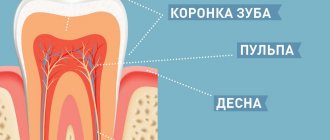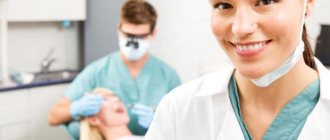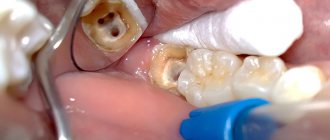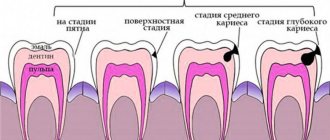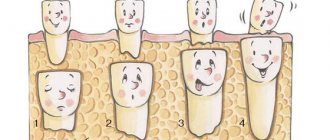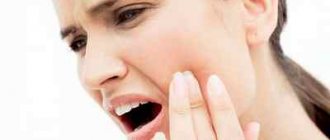What it is
Vomiting is the act of contraction of individual muscle groups of the gastrointestinal tract, as a result of which the bolus of food moves from the distal parts to the oral cavity.
The mechanism of formation of the urge to vomit has a complex reflex nature, the implementation of which is ensured by the vomiting center in the medulla oblongata in the region of the reticular formation. Activation of the vomiting center can occur through impulses from visual, olfactory, and taste receptors. Due to the close localization of the nerve centers of many reflexes to the vomiting center - respiratory, vasomotor, salivary center - the process of vomiting is accompanied by reactions caused by irritation of these centers:
- changes in breathing,
- salivation,
- tachycardia,
- increased sweating,
- pallor of the skin.
The vomiting center responds to impulses transmitted by the nervous system, brain and stomach.
Degrees of manifestation
The gag reflex consists of several stages:
- Urging phase.
- Immediate attack of vomiting.
- Recovery period.
- Intermediate stage.
The first phase is characterized by the appearance of the following symptoms:
- stomach spasm,
- feeling of nausea,
- dizziness,
- increased sweating.
The urge phase can last from a few minutes to a couple of hours, and in some situations it can be absent. You can avoid moving to the next stage by suppressing an attack of nausea, for example, with medications.
The second stage consists directly in the act of vomiting. It is very painful. Taking fluids and medications is difficult.
When the attack of vomiting passes, pressure in the stomach area decreases, and endorphins enter the bloodstream, contributing to a feeling of relief. A person regains a healthy complexion and an appetite appears.
At the intermediate stage between outbreaks of vomiting, there are no signs of illness.
Why do we feel the urge to vomit?
The causes of vomiting are highly variable. The gag reflex (hereinafter referred to as RR) performs a protective function for the body, facilitating the removal of toxic substances formed in it from the stomach or preventing unwanted substances from entering the digestive system.
Vomiting is a response to irritation:
- receptors of the gastric mucosa as a result of intoxication,
- vestibuloreceptors when changing the speed and direction of body movement in space;
- mechanical irritation of the walls of the pharynx and the root of the tongue.
Attacks of nausea and vomiting can be triggered by strong emotional experiences, stress, serious illnesses affecting the central nervous and cardiovascular systems of the body, diseases of the abdominal organs, toxicosis in early pregnancy, as well as taking certain medications.
Symptoms of increased RR
The mouth reflex during dental treatment can occur due to excessive nervousness and fear of the patient before the procedure itself, as well as increased sensitivity of the receptors of the tongue and the mucous membrane of the palate. The urge to vomit in this situation acts as an excessive defensive reaction of the body, aimed at preventing the entry of a foreign body into the respiratory tract.
Some patients with increased RR may experience discomfort even when brushing their teeth. They react with the urge to vomit even when touched not to the back wall of the throat, but also to the very front teeth. If the touch of your own fingers and food do not cause unpleasant symptoms, then foreign objects always provoke nausea - be it a toothbrush or doctor’s instruments. This makes it difficult for an otolaryngologist to examine your throat and perform most dental procedures.
It becomes problematic to treat lateral teeth, examine wisdom teeth, make impressions, install dentures, since all these actions are accompanied by contact with the soft tissues of the oral cavity, provoking the occurrence of RR.
I recommend the best dentistry in Moscow at attractive prices! Promotion:
Leave a review
DentistryClinic servicesDental treatmentDental treatment for gag reflex
If you are one of those people who have a pronounced gag reflex when touching the mucous membranes of the oral cavity with foreign objects, then this article will help you get in the right mood for your planned trip to the dentist.
The gag reflex that occurs in a patient during dental treatment in the dentist’s office is not a pathology, especially since with an experienced doctor’s approach this problem can be easily resolved using various means.
- physiological
, which are caused by a person’s individual increased sensitivity to smells, tastes, as well as as a result of mechanical effects on the sensitive soft tissues of the walls of the pharynx and the root of the tongue. Most often, the cause of a vomiting reaction in this case is problems with nasal breathing, gastrointestinal diseases, pregnancy; - psychological
, caused by fear of visiting the dentist. Often, before visiting a doctor, patients stress themselves out in advance, fearing the pain of the upcoming procedure, thereby exacerbating a possible stressful situation.
As dental practice shows, patients with a pronounced gag reflex are often helped to reduce it by simply switching attention and distracting themselves to something else.
On the eve of a visit to the dentist, doctors recommend drinking soothing infusions or teas (chamomile, mint, valerian, etc.), which reduce nervousness and help calm down.
You can take Afobazole or Novopassit tablets, which are sedatives and help relieve stress and fear of upcoming medical procedures: they should be taken twice - the night before and on the day of visiting the dentist.
The gag reflex can manifest itself to varying degrees in different people, and for each case there are methods and means to suppress it.
So, to reduce the gag reflex in mild cases, use:
- methods of psychological influence: distracting or relaxing the patient with music, TV, etc.;
- during dental treatment, the dentist uses a special rubber dam device, which is a latex sheet that serves to isolate the soft tissues of the oral cavity from foreign objects and the teeth themselves that require treatment;
- carry out “freezing”, i.e. anesthesia of the palate.
With a moderate degree of gag reflex:
- To calm the patient, sedation is performed together with local anesthesia. In this case, a mixture based on nitrogen and oxygen (nitrous oxide sedation) is used as a sedative, which is inhaled by a person using a mask. At the same time, contact between the patient and the doctor is maintained, since the former does not fall asleep (unlike under anesthesia).
If the patient has a severe gag reflex and the previously described methods did not lead to results, then general anesthesia is used.
To reduce the sensitivity of the soft tissues of the oral cavity during dental treatment, they are treated with Lidocaine spray or lubricated with an anesthetic gel. This procedure helps both the patient and the doctor to carry out the necessary manipulations with the diseased tooth.
In case of increased salivation, a saliva ejector is used and such patients are treated in a sitting position, since in this case saliva does not reach the root of the tongue and thereby does not cause attacks of nausea and vomiting.
When treating teeth on the upper jaw, superficial anesthesia of the palate is performed.
In the case of treatment of lower teeth, the method of conduction anesthesia is used, i.e. at the same time, the cheeks, gums, lower lip along with part of the tongue become numb.
To reduce vomiting, it is recommended to take the following medications at home:
- Ceruca L
together with
Motilium,
half a tablet for 4-5 days before visiting the dentist, then the day before and on the day of the visit to the doctor you need to drink a whole tablet (you can also take Motilium and Metoclopramide, also reducing their dosage); - any anti-motion sickness medications, such as Dramamine;
- Adaptol
, take two tablets (for adults) the evening before and on the day of the doctor’s visit; - Cerucal
, take a tablet 3 times the day before and once on the day of administration.
Taking the above medications helps to almost completely get rid of attacks of nausea and vomiting during dental treatment in the dentist’s office and in the future, after 2-3 visits, you will be able to do without any additional medications at all.
The following recommendations will help you reduce your gag reflex without pills:
- Before visiting the dentist, refrain from eating and drinking heavily (a couple of hours);
- if you have trouble breathing through your nose, then put it in, it will make your breathing easier right in the doctor’s chair;
- if you have increased salivation, then before visiting the dentist, rinse your mouth with a soda or saline solution, and during the procedure you can rinse your mouth with a solution that has a pronounced mint or eucalyptus taste;
- It is known that after lunch the gag reflex is reduced compared to the morning, so it is better to treat your teeth in the afternoon;
- if during dental treatment you suddenly develop a feeling of nausea, then in this case rhythmically inhale through your nose and exhale through your mouth (this blocks vomiting, since simultaneous breathing and vomiting are not physiologically compatible);
- try to distract yourself if you feel nauseous: switch your attention to something else, for example, to the TV, other patients, listen to music, shake your leg, etc.;
- train your gag reflex: every day for one to two weeks, try putting a teaspoon into your mouth as deeply as possible, touching it to the roof of your mouth near your front teeth, and gradually move on. Thus, you can significantly reduce the manifestation of the gag reflex;
- Warn the dentist about your gag reflex, calm down, let the conversation with the doctor dispel all your fears and anxieties, this will help you reduce the symptoms of nausea during treatment, since the psychological aspect is perhaps the key in this case.
Your positive attitude, together with the competent approach of the dentist, will help treat your teeth comfortably and effectively, and attacks of nausea and vomiting can be easily relieved using various methods.
- Dental treatment for gag reflex
recent reviews from our clients Be the first to review
Source: https://www.Dr-Lopatin.ru/services/therapy/lechenie-zubov-pri-rvotnom-reflekse/
How can a doctor help such patients?
If a person suffers from an increased gag reflex, he should definitely report the problem to his dentist. Doctors have many techniques and medications in their arsenal that will help relieve unpleasant symptoms.
Firstly, they try to treat the patient in a sitting position, since in a horizontal position, saliva accumulates at the base of the tongue, causing RR.
During the treatment process, the dentist, knowing about the problem, will try not to accidentally touch sensitive areas of the oral cavity and use a saliva ejector more often. May try to distract the patient by talking, or turn on relaxing music.
He will suggest using a rubber dam - this is a special latex plate that allows you to isolate the tooth that will be treated with dental procedures from the rest of the oral cavity. In this way, the soft tissues of the tongue, cheeks and palate are protected from touching.
To reduce tissue sensitivity, your doctor may also prescribe local anesthesia.
In most cases, the gag reflex is well controlled by drugs for the prevention and treatment of seasickness such as Aeron, Dramina and drugs that have an antiemetic effect, for example, Adaptol, Motilium, Falimint, Cerucal.
If the patient’s attacks of nausea are psychogenic in nature, and the above methods do not help suppress the occurrence of the gag reflex, superficial sedation is used. As a rule, an inhalation method is used using nitric oxide for children and intravenously for adults (sodium iopental, propofol, ketamine). Sedation causes a state of half-sleep, helps suppress fears and maximize patient relaxation. However, in this state, the person remains conscious, can talk, and all reflexes are preserved, so this procedure does not eliminate the need for local anesthesia.
If the problem is not dental phobia, and superficial anesthesia and medications do not have the desired effect, general anesthesia is prescribed.
What to do with the gag reflex during dental treatment
Some patients wonder how to treat teeth with a gag reflex. And, often, this problem becomes the reason for rare visits to the doctor. In fact, vomiting, being a normal protective mechanism of the body, does not carry any pathology and is only a consequence of the influence of various factors.
Causes of the gag reflex
The signal to launch a defensive reaction comes from certain structures of the brain. The root cause can be both physical and psychological factors. The first includes touching instruments to the mucous membrane of the oral cavity.
It is important to note that a rejection reaction is normal when foreign bodies enter the mouth. To eliminate unpleasant sensations in this case, distracting the patient (listening to music or watching a movie) can help, and careful work of a specialist is also required.
Usually, before the appointment, the person himself reports the problem and it can be solved through the competent work of the doctor.
If the reasons are psychological in nature, then we are talking about one of the manifestations
of dental phobia
. In such a situation, treatment should take place in the most calm environment and with maximum comfort for the patient.
The doctor may also recommend visiting a psychologist or help yourself through gradual involvement in dental procedures.
This means that a person does not come to the first visit to have a tooth removed, but begins with a consultation and communication, so that stopping at the office becomes habitual and anxiety subsequently decreases each time. This approach helps reduce the manifestations of phobia and helps the patient to have the right attitude.
Degrees of gag reflex severity
Sometimes the above methods do not help suppress the increased gag reflex during dental treatment; in total, three degrees of its severity can be distinguished.
Mild degree
A mild degree can be noticed when touching the soft palate, the root of the tongue or its lateral surfaces. Distraction methods, local anesthesia and careful actions of a specialist help.
Average degree
With a moderate degree, a reflex occurs to any touch in the oral cavity; it may have a psychological causative factor and, as a rule, causes significant discomfort to the patient. Anesthesia with accompanying sedation can eliminate the problem.
This allows the patient to practically sleep during the appointment and blocks some of the impulses to the brain that trigger the reflex reaction. In addition, medication preparation for visiting a doctor can be used. Tablets for the gag reflex in dentistry: Cerucal or Dramamine help to completely suppress reflex activity.
And the drugs Novopassit or Afobazol at night help reduce anxiety during the next day.
Severe degree
Severe severity is very difficult for the patient to tolerate. Vomiting can occur even when simply opening the mouth (at the thought of the upcoming manipulation).
It is difficult for a dentist to even examine the oral cavity, not to mention the difficulties that arise during dental prosthetics, then they resort to the use of anesthesia.
To increase the productivity of the procedure, a large volume of treatment is performed at one time (this can be both therapeutic and surgical intervention). It is also difficult for the patient to carry out daily hygiene measures.
The gag reflex when brushing your teeth greatly aggravates the situation. As a rule, such people are prescribed antiemetics and sedatives on an ongoing basis. It is very important to maintain oral hygiene as it directly affects the health of your gums and teeth.
How to reduce the gag reflex?
There are a number of non-drug ways to reduce the gag reflex: 1. If you suddenly feel nauseous during your appointment, immediately tell your doctor and start inhaling air through your nose and exhaling through your mouth. The physiological processes of breathing and vomiting contradict each other.2.
Do not overeat immediately before your appointment (eat 2 hours before treatment).3. You can reduce your gag reflex at home through exercise. You can use a regular spoon and touch it to the oral mucosa, so over time you will get used to such sensations and the reflex will appear less often.4.
Fresh scents of eucalyptus, menthol or citrus fruits can help distract you from nausea (you can take with you essential oil, the smell of which calms you down).
5. Always have a positive attitude towards the reception and do not think about the unpleasant during manipulations.
It is possible to reduce the gag reflex during dental treatment and it is necessary to solve this problem immediately when it appears. Find for yourself what reduces discomfort and prepare for each appointment.
Always report all problems before starting manipulations; the doctor’s main task is to provide comfortable treatment, taking into account all your characteristics.
Source: https://zen.yandex.ru/media/id/5d0cd0bc25509600afe08ec6/chto-delat-s-rvotnym-refleksom-pri-lechenii-zubov-5d24cde131878200ac19029c
How to relieve your condition yourself
To reduce the level of anxiety, on the eve of the procedure you can take sedatives such as Afobazol, Novopassit, or drink a decoction of herbs that have a sedative effect: chamomile, valerian, mint. Before performing a dental procedure, you should sprinkle a few grains of salt on your tongue or rinse your mouth with salt water. It is better not to eat anything and not drink much liquid.
If you find yourself in the dentist's chair and feel the occurrence of unpleasant symptoms, you can try the following techniques:
- relax your tongue;
- breathe exclusively through the nose;
- to achieve a relaxed state, focus as much as possible on the breathing process;
- think about something pleasant, try to distract yourself with music, watching TV;
- in order not to increase the attack of nausea, it is better not to close your eyes;
- Tighten your abdominal muscles as much as possible and sharply raise straight, outstretched legs;
- Forcefully clench the fist of your left hand.
It is advisable to schedule a visit to the dentist in the afternoon, since in the morning the likelihood of a gag reflex increases.
Reflex severity
The gag reflex manifests itself in different ways. It is better to choose remedies to help cope with it depending on the severity.
Mild degree
It usually does not cause serious problems during dental treatment. You can deal with it using the following methods:
- When the gag reflex is psychological in nature, the dentist can simply distract the patient. To reduce your stress levels, you can refocus your attention the night before your doctor's visit.
- If the gag reflex is caused by touching the mucous membranes, the doctor protects them with a rubber dam. This is a latex sheet that the dentist uses to cover the mucous membrane. This way it protects it from contact with foreign objects. The rubber dam also allows you to isolate soft tissue from the diseased tooth, providing additional protection.
- Anesthesia. Anesthetic drugs help not only relieve pain in the mouth. They have a freezing effect, the mucous membrane becomes less sensitive.
Average degree
It is very important here to reassure the patient and reduce his anxiety. Regular local anesthesia will not have the desired effect, since it only numbs the pain. Using general anesthesia in such cases is not always justified.
Sedation helps cope well with the problem of fear and nausea. The patient is given nitrous oxide to inhale through a mask. He falls into a relaxed state, but is fully conscious. This is the advantage of sedation over anesthesia, since the contact between the dentist and the patient is completely preserved.
Severe degree
It is not always possible to cope with nausea to such an extent with conventional sedatives. Such cases are an indication for the use of general anesthesia.
How to train your body to react less violently
There are several ways that can reduce the strength of RR, or even completely eliminate attacks of nausea.
Exercise to reduce the sensitivity of mucous membranes
You can reduce the strength of the reflex urge to vomit by regularly stimulating sensitive areas of the mouth. For example, every day put a spoon or toothbrush in your mouth, first trying to press it to the palate in the area of the front teeth and trying to suppress the emerging RR.
Having achieved success, you can move a centimeter further and do the same procedure. So in a few weeks of daily training you can achieve significant success.
Acupressure
There is a special point on the human body, stimulation of which can relieve nausea. From the transverse fold on the wrist, you should step back three fingers' width and feel the place between the two large tendons. During an attack, you need to press firmly on this place on both sides of the wrist and massage more gently for several minutes. You can also purchase and wear an acupressure bracelet by placing the applicator directly on this point.
Autotraining
If the problem of the gag reflex is primarily psychological, it will be useful to master simple auto-training techniques. Having learned to use the relaxation method first at home, in a comfortable environment, you can resort to its help in the dentist’s chair in the future. The exercise should be performed in a comfortable position with your eyes closed, using your imagination to achieve a feeling of heaviness, warmth, pulsation, coolness in different parts of the body. The effect can be enhanced by repeating positive phrases during the exercise.
Meditation
By regularly practicing meditation (focusing on breathing while distracting yourself from any thoughts for 10-15 minutes), a person gains the ability to control his emotional state during a dental appointment, easily discarding frightening and disturbing thoughts.
If a person suffers from an increased gag reflex, this is not yet a reason to avoid visiting the dentist and neglect the condition of his teeth. You just need to consult a doctor and choose the appropriate way to relieve the symptom.
Steps
Fast-acting methods
- Reduce the sensitivity of the soft palate.
The gag reflex can occur when touching the soft palate. Try desensitizing your soft palate with an over-the-counter throat numbing spray such as Chloraseptic. You can also gently apply a topical analgesic containing benzocaine with a cotton swab. The effect of the medicine will last about an hour, during which the palate will be less sensitive.
Squeeze your thumb.
Bend your left thumb toward your palm and make a fist. In this case, the thumb should be under the other fingers. Clench your fist tightly so that it does not hurt you. This way you will press on the point that controls the gag reflex.
Apply some table salt to your tongue.
Wet the tip of your finger and dip it in the salt, then touch it to your tongue. Salt stimulates the taste buds on the tip of the tongue and thereby triggers a reaction in the body that allows you to temporarily suppress the gag reflex.
- You can also dissolve a teaspoon (7 grams) of salt in a glass (250 milliliters) of water and rinse your mouth with it. Don't forget to spit!
- Beep your horn.
Humming under your breath helps normalize your breathing, which is necessary for relaxation. In addition, the gag reflex does not go well with humming under your breath. Try this method when visiting the dentist, taking an x-ray, or taking a dental impression.
The gag reflex is defined as one of the protective properties of the body. It appears when damaging or toxic substances enter the digestive system. However, an increased gag reflex is often detected. Often this reaction occurs during morning hygiene procedures. Why does a gag reflex occur when brushing your teeth and how to deal with it?
This reaction is very typical for young children. It should be noted that the gag reflex is developed differently in each child. Often this reaction occurs to the taste of the toothpaste, to the brush itself. However, in some cases it may indicate a stressful condition or a gastrointestinal disease. Sometimes the gag reflex intensifies when a child goes to the dentist. In this case, the reaction is associated with fear of interference. As practice shows, this condition goes away after a trusting relationship is established between the doctor and the baby. Sometimes children themselves provoke this reaction of the body. Thus, they show reluctance to brush their teeth.
You can cope with the situation by using various methods. Mainly, parents should remember that almost always a reflex can be “trained.” In this case, in order to prevent an unwanted reaction in a child while brushing his teeth, you should choose a comfortable brush with a small head and purchase the toothpaste he likes. In addition, cleaning procedures should be carried out daily. As a rule, over time, the child gets used to this need, which contributes to the disappearance of this unpleasant phenomenon. However, if the methods described above do not bring the desired result, you should consult a doctor.
Morning routines include more than just washing your face and brushing your teeth. attention must also be paid. In adults, this action often causes a gag reflex. However, it is necessary to carry out measures to clean the tongue.
There are special scrapers and soft brushes that are used for cleaning. Movements should be careful and directed towards the outer edge of the tongue from the root. The above steps are carried out after preliminary brushing of the teeth.
If tongue cleansing has not been carried out before, then the first procedures may cause urges. Often this condition occurs when using toothpaste, so experts do not recommend using it during the first brushings.
In order to get rid of the gag reflex, there is a special set of exercises.
First, it is necessary to determine the area upon exposure to which a protective reaction occurs. To do this, run the toothbrush from the root of the tongue to its tip.
You should begin massaging the area adjacent to the point upon which a reflex occurs. You shouldn't try to move forward right away.
You can start while brushing your teeth in the evening or at any convenient time. It is recommended to massage for ten seconds. The process may cause discomfort. However, massage will reduce sensitivity.
After several days, the reflex will not be as active. In this case, you should not stop exercising. On the contrary, it is recommended, if possible, to increase their duration and area of influence.
It should be noted that, as a rule, it is not possible to achieve the desired result immediately. It may take several weeks for the reflex to completely resolve. It should be remembered that all movements must be made carefully and not stop the procedure for a day.
If, after suppressing the reaction, it returns after some time, it is recommended to repeat the course. If this does not bring results, you should visit a doctor.
The reaction of the human body, which involves the elimination of dangerous foreign elements that can clog the airways, is defined as the gag reflex.
Sometimes this “watchman” serves as a disservice, interfering with hygienic or dental procedures.



